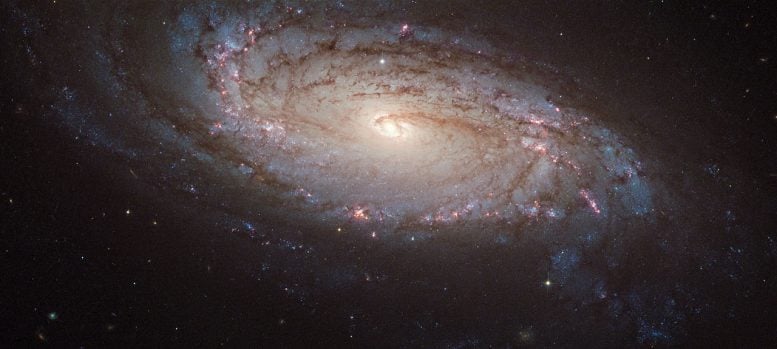
This Hubble image shows spiral galaxy NGC 5806, which is located in the constellation Virgo roughly 80 million light years from Earth, and a supernova explosion called SN 2004dg.
A new image from the NASA/ESA Hubble Space Telescope shows NGC 5806, a spiral galaxy in the constellation Virgo (the Virgin). It lies around 80 million light-years from Earth. Also visible in this image is a supernova explosion called SN 2004dg.
The exposures that are combined into this image were carried out in early 2005 in order to help pinpoint the location of the supernova, which exploded in 2004. The afterglow from this outburst of light, caused by a giant star exploding at the end of its life, can be seen as a faint yellowish dot near the bottom of the galaxy.
NGC 5806 was chosen to be one of a number of galaxies in a study into supernovae because Hubble’s archive already contained high-resolution imagery of the galaxy, collected before the star had exploded. Since supernovae are both relatively rare, and impossible to predict with any accuracy, the existence of such before-and-after images is precious for astronomers who study these violent events.
Aside from the supernova, NGC 5806 is a relatively unremarkable galaxy: it is neither particularly large or small, nor especially close or distant.
The galaxy’s bulge (the densest part in the center of the spiral arms) is a so-called disk-type bulge, in which the spiral structure extends right to the center of the galaxy, instead of there being a large elliptical bulge of stars present. It is also home to an active galaxy nucleus, a supermassive black hole that is pulling in large amounts of matter from its immediate surroundings. As the matter spirals around the black hole, it heats up and emits powerful radiation.
This image is produced from three exposures in visible and infrared light, observed by Hubble’s Advanced Camera for Surveys. The field of view is approximately 3.3 by 1.7 arcminutes.
A version of this image was entered into the Hubble’s Hidden Treasures Image Processing Competition by contestant Andre van der Hoeven (who won second prize in the competition for his image of Messier 77). Hidden Treasures is an initiative to invite astronomy enthusiasts to search the Hubble archive for stunning images that have never been seen by the general public. The competition has now closed.
Never miss a breakthrough: Join the SciTechDaily newsletter.